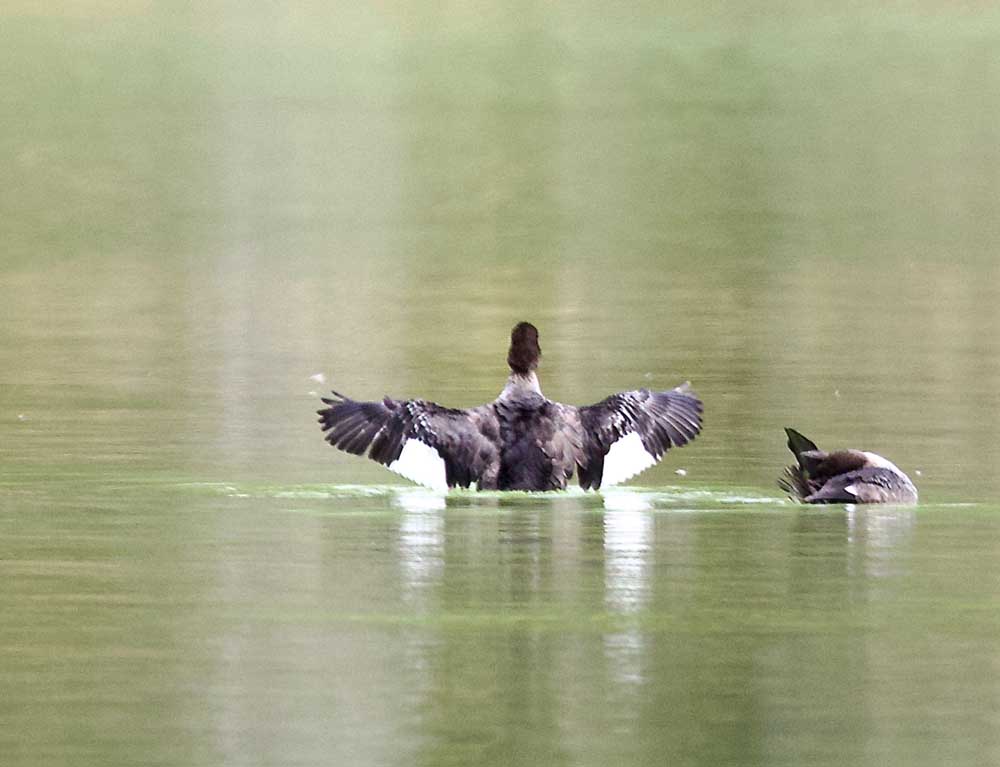Pleasures of prairie birding: Fall migration
Published 2:24 pm Friday, September 22, 2023

- Ducks were abundant. These female common goldeneyes were resting in a prairie wetland.
Occasionally, I like to bird on the prairies of North America. Sometimes I bird in the U.S. and sometimes I bird in Canada. My latest visit was a birding trip on the Alberta prairies.
Trending
The prairie grasslands of central North America consist of numerous habitats including sloughs, and marshes, wooded coulees, river valleys, and large sage scented stretches of grassy rolling plains (Lynch, 2021). Alberta has all these habitats as well as sculptured, sandstone badlands. Over 250 species can be seen in the prairies of Canada and the northern U.S. due to such a wide variety of habitats. About one quarter of the species found on the prairies are migrants and mainly includes shorebirds, waterfowl, and wood warblers. Winter residents comprise about ten percent of prairie birds. Winter finches, raptors and owls may be seen.
This is the season of fall migration. Grassland birds such as the mountain bluebird were on the move. At least a dozen flew over the grasslands snatching insects as they prepared to continue their journey south. A few birds of prey were also on the move including Swainson’s hawks, merlins and red-tailed hawks. These species were hunting from perches such as tree branches, hay bales, fence posts and very tall utility posts. On some stretches of road there was a hawk on every post for what seemed like a few miles. Often while watching, a hawk would suddenly fly off its perch, hover in midair as it looked for prey, and then, when the time was right it performed a fast dive to snag it with its sharp talons. It is quite a sight to see. It is aerobatic performance at its best, and almost better than an airshow!
A few osprey nests still had at least one bird teetering on the edge as if it was trying to decide whether the time was right to fly south. Most likely, these birds were this year’s fledged young. American robins were gathering and so were barn swallows. One pair of barn swallow parents were still feeding their last brood. Their fledglings sat as still as church mice on a deck railing until they noticed a parent on its way with a beak full of insects. Then they rapidly fluttered their wings to encourage the parent to hurry on over with the protein!
Trending
A few western meadowlarks were sitting on fence posts watching for insects in the prairie grasses. One meadowlark, noticed Susan’s camera pointing at it. I guess it didn’t want its photograph taken because it flew off into the long grass, but it kept checking to see whether the camera was still there by stretching its neck up and up just high enough so it could peek over the stems of golden grass at the camera.
Waterfowl were abundant. Most were molting so most males weren’t wearing the colorful garb of spring. Mallards and American wigeon were the most common. Pied-billed grebes, lesser scaup, ring-necked ducks, golden-eye, northern shovellers, ruddy ducks and American coots were foraging in the sloughs and other wetlands fattening up for their migration.
Sparrows depend on grasslands too, and many species were on the move. Many nest on the prairies. The most numerous species were vesper sparrows followed by savannah sparrows. They were clearly feeding on the seeds of the grasses and as well as those of other plants.
Scientists tell us that the birds of the prairies are a disappearing from the grasslands faster than from any other bird habitat. If you have never gone looking for prairie birds now is the time. It is one of the best times to see them and perhaps a time to do what we can to help preserve the grasslands of North America. Birding the prairies will serve as a reminder of what we can lose if we fail to value it. Happy birding!









